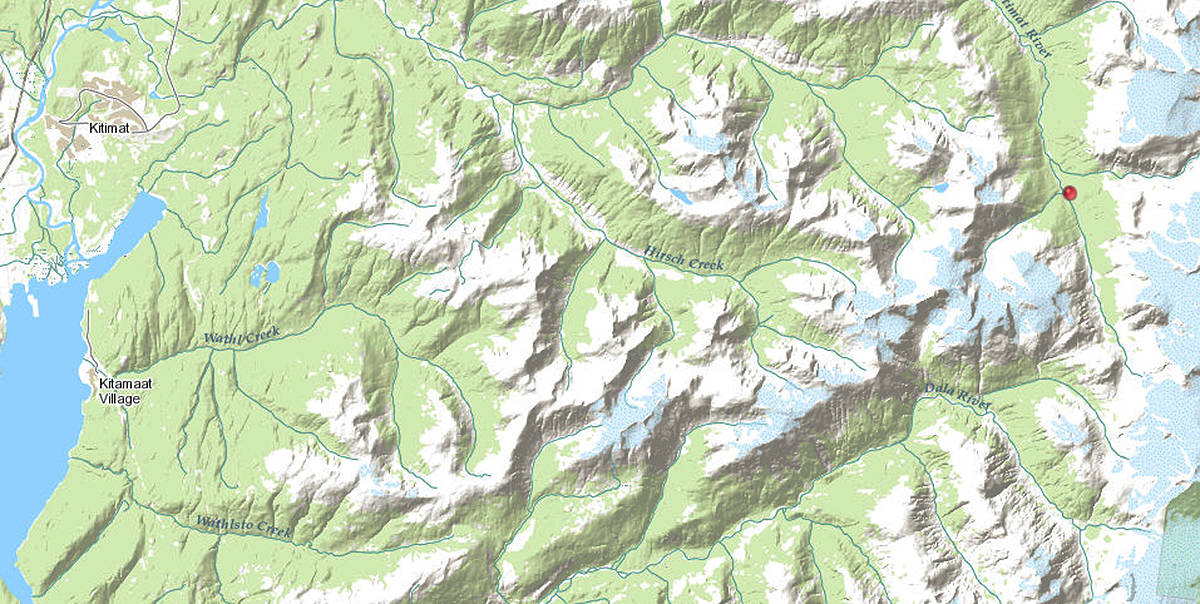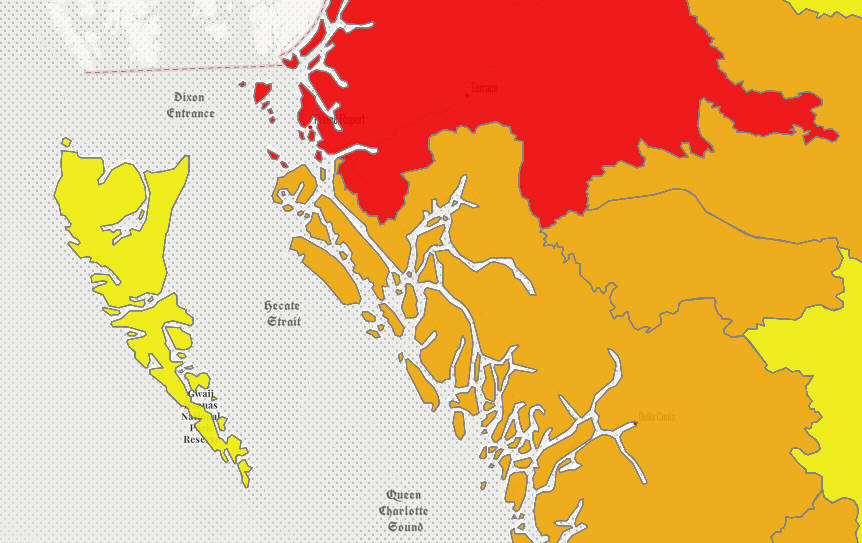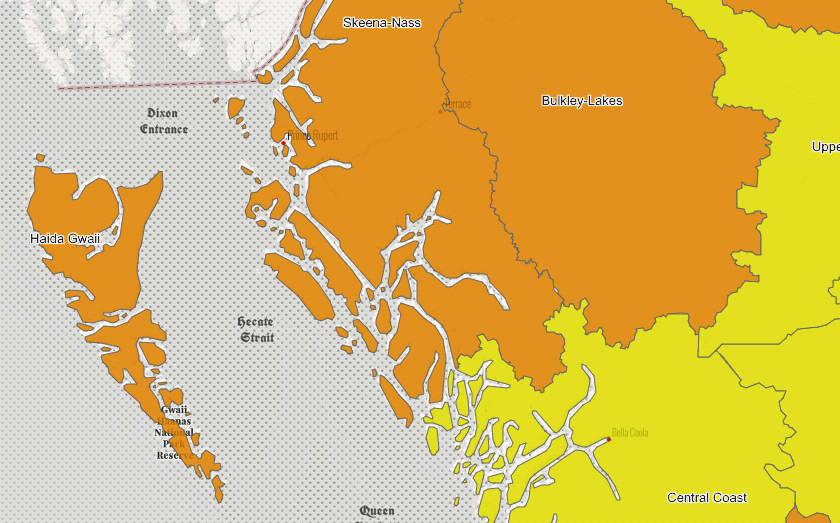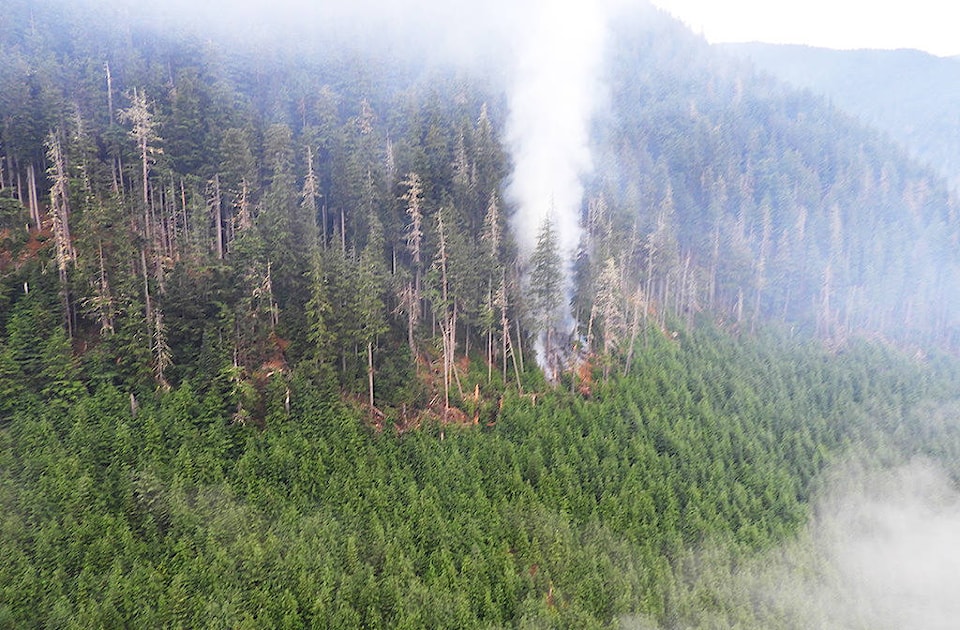Two wildfires close to Kitimat are part of a number of wildfires in the Northwest started following lightning storms moving through the region.
Northwest Fire Centre fire information officer Carolyn Bartos said the first wildfire, reported by a motorist on Saturday, July 6 at about 4 p.m., started 23 kilometres north of Kitimat along Highway 37 close to the Kitimat River bridge.
“This fire was attended by an Initial Attack Crew consisting of four firefighters. It is under control and has received sufficient suppression action and no further spread of the fire is expected,” said Bartos on Monday afternoon.
The second wildfire – reported by a commercial airline pilot flying between Terrace and Vancouver on Monday, July 8, at about 7:30 a.m. – was reported to be half a hectare in size at the time.
“It’s very typical that pilots will call fires in to us,” said Bartos.
The fire started about 35km east of Kitimat, high up on the bank of the Kitimat River, on very steep, mountainous terrain.
Classified a “fly-in fire”, the fire was being tackled by two Initial Attack Crews of four members each, assisted by a helicopter dropping buckets of water onto the flames.
“Steep terrain poses challenges for the firefighters, including accessing the site. In this incident crews are hiking in due to the limited space for a helicopter to land,” said Bartos.
The fire, named R50896, was classified as Rank 2, a fire which burns in the surface fuel layer, excluding the crowns of trees.
“A Rank 2 fire has little or no spread. Suppression efforts include direct manual attack with hand tools and water if possible,” added Bartos.
Initially the weather played along, with a light breeze blowing, but torrential rainfall later in the day forced the fire crews to vacate the area.
“The rain most likely diminished the amount of fire activity, which was not a lot to begin with,” said Bartos.
The wildfire was still listed as active on Tuesday at the time of going to press.
READ MORE: Human cause suspected in North Hirsch wildfire
Since June 5, the BC Wildfire Service has responded to nine new fires suspected to be lightning-caused, most of them smaller than one hectare.
A third wildfire, further to the east along the Burnie River, was discovered on Sunday, July 2, also believed to be caused by lightning. BC Wildfire Service listed the fire as “being held” at the time of going to press.
Another wildfire – reported in remote terrain about 135 kilometres northwest of Dease Lake – covered about 250 hectares. BC Wildfire Service classified that wildfire as “out of control.”
The likelihood of wildfires starting as a result of the increase in lightning storms is further worsened by the dry conditions in the region and higher-than-normal temperatures. Currently the Skeena-Nass region is classified as very dry, making this the second year in a row the region has experienced hot, dry conditions.
“The BC Wildfire Service is conducting ongoing air and ground patrols to monitor the region for new wildfire starts,” said Bartos.



